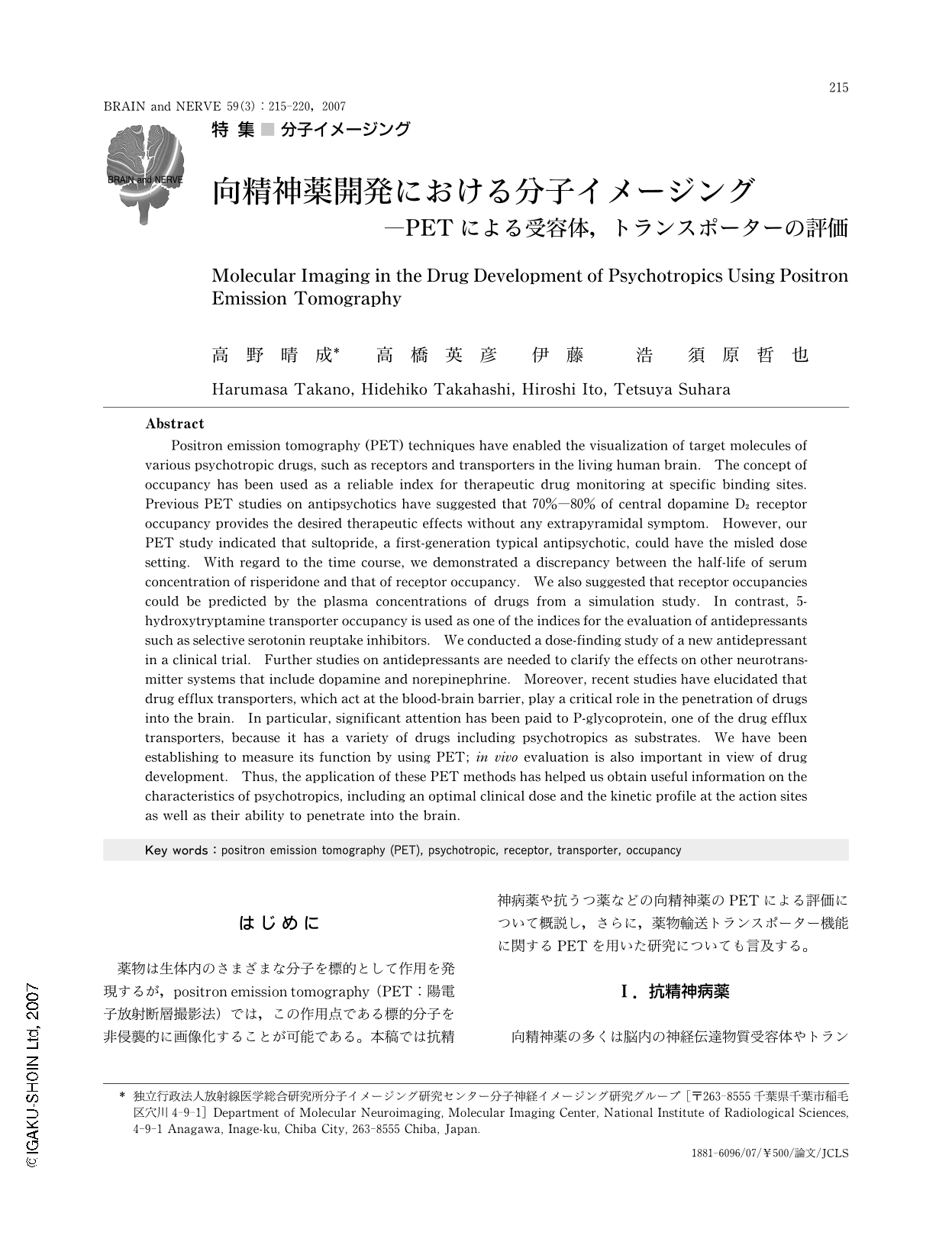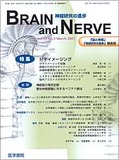Japanese
English
- 有料閲覧
- Abstract 文献概要
- 1ページ目 Look Inside
- 参考文献 Reference
はじめに
薬物は生体内のさまざまな分子を標的として作用を発現するが,positron emission tomography(PET:陽電子放射断層撮影法)では,この作用点である標的分子を非侵襲的に画像化することが可能である。本稿では抗精神病薬や抗うつ薬などの向精神薬のPETによる評価について概説し,さらに,薬物輸送トランスポーター機能に関するPETを用いた研究についても言及する。
Abstract
Positron emission tomography(PET) techniques have enabled the visualization of target molecules of various psychotropic drugs, such as receptors and transporters in the living human brain. The concept of occupancy has been used as a reliable index for therapeutic drug monitoring at specific binding sites. Previous PET studies on antipsychotics have suggested that 70%―80% of central dopamine D2receptor occupancy provides the desired therapeutic effects without any extrapyramidal symptom. However, our PET study indicated that sultopride, a first-generation typical antipsychotic, could have the misled dose setting. With regard to the time course, we demonstrated a discrepancy between the half-life of serum concentration of risperidone and that of receptor occupancy. We also suggested that receptor occupancies could be predicted by the plasma concentrations of drugs from a simulation study. In contrast, 5hydroxytryptamine transporter occupancy is used as one of the indices for the evaluation of antidepressants such as selective serotonin reuptake inhibitors. We conducted a dose-finding study of a new antidepressant in a clinical trial. Further studies on antidepressants are needed to clarify the effects on other neurotransmitter systems that include dopamine and norepinephrine. Moreover, recent studies have elucidated that drug efflux transporters, which act at the blood-brain barrier, play a critical role in the penetration of drugs into the brain. In particular, significant attention has been paid to P-glycoprotein, one of the drug efflux transporters, because it has a variety of drugs including psychotropics as substrates. We have been establishing to measure its function by using PET; in vivo evaluation is also important in view of drug development. Thus, the application of these PET methods has helped us obtain useful information on the characteristics of psychotropics, including an optimal clinical dose and the kinetic profile at the action sites as well as their ability to penetrate into the brain.

Copyright © 2007, Igaku-Shoin Ltd. All rights reserved.


